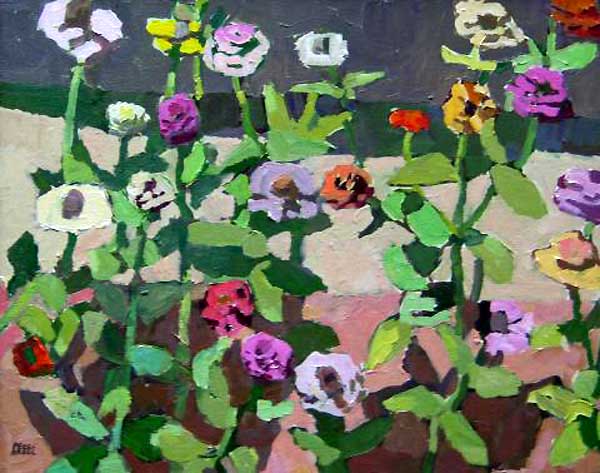By Donna Poulton
Known as ‘dead coloring’ by the old masters, grisaille paintings are characterized by the use of monochromatic (one color) paint. Typically the paint used is a tone of black, but artists also use indigo blue, sepia or brown. Starting in the sixteenth century the technique was used as ‘underpainting’ to help artists define light and dark areas of the painting before adding color.
 Credit: Coeur D’Alene Art Auction
Credit: Coeur D’Alene Art Auction
Thomas Moran (1837-1926), Avalanche in Cottonwood Canyon, c. 1895, oil on board, 14 x 11 in.
Grisaille paintings are often offered for sale by western art auctions and galleries today. Oftentimes you’ll hear viewers wondering why the artist “didn’t finish the painting.” The simple answer is the works are finished. Newspapers and magazines in the latter part of the 19th century and early 20th needed black and white images for their publications—especially as they tried to fill the high demand of their readership for images of the West.
 Credit: Coeur D’Alene Art Auction
Credit: Coeur D’Alene Art Auction
Frederic Remington (1861-1909), He Made his Magazine Gun Blaze…, 1900, oil on canvas, 40 x 27 in.
In order to create the truest color, with the highest sense of drama, illustrators such as Thomas Moran, Frederic Remington, Charles Russell, Maynard Dixon, Frank Tenney Johnson, Herbert Buck Dunton, and William H.D. Koerner painted their illustrations for print using the tonal variations of black and white paint.
 Credit: Christie’s New York, Rockerfeller Center
Credit: Christie’s New York, Rockerfeller Center
Frederic Remington (1861-1909), He Was the Law (Billy the Kid), c.1901, oil on canvas, 27 x 40 in.
 Credit: Christie’s Los Angeles
Credit: Christie’s Los Angeles
Maynard Dixon (1875-1846), Go Get One, 1912, oil on board, 27 x 19 in.
 Credit: Bonhams & Butterfields San Francisco
Credit: Bonhams & Butterfields San Francisco
Maynard Dixon (1875-1846), The Car Was at His Hip-Almost, 1913, gouache on paper, 29 x 20 in.
 Credit: Christie’s Los Angeles 10.29.08
Credit: Christie’s Los Angeles 10.29.08
Herbert Buck Dunton (1878-1936), Follerin’ the Tracks, 1907, oil on canvas, 30 x 18 in.
 Tuesday, August 14, 2012 at 11:24PM Tweet
Tuesday, August 14, 2012 at 11:24PM Tweet  Credit: Maynard Dixon Country
Credit: Maynard Dixon Country















